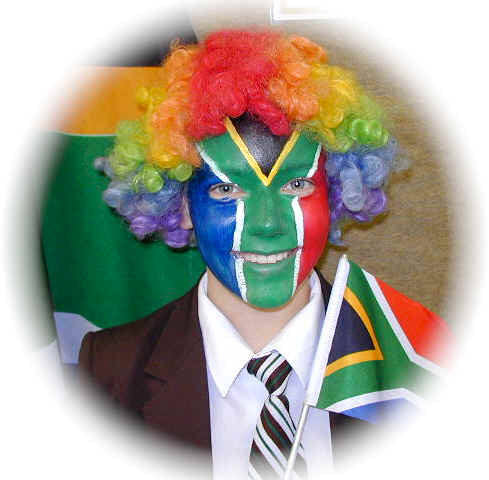National Flag of South Africa

The flag was designed by State Herald, Mr F Brownell.
Mr Brownell said the flag is a synopsis of the various standards which had flown in South Africa since Dutch Governor Jan van Riebeeck arrived at the Cape in 1652. It represented the two paths (of black and white people) converging "and then proceeding on the same path".
All South Africans were invited to submit suggestions for a new flag. No fewer than 7000 submissions were made, but none could satisfy the Negotiating Council, who were entrusted with the task of selecting a new flag. The Transitional Executive Council took over the task in 1994 and they appointed a technical working committee, headed by Mr Fred Brownell. It was generally agreed that in the interest of national unity, the central theme should incorporate some design of convergence. On the 15 March, 1994 the final design was adopted by the TEC as the new SA flag.
The first official hoisting of the flag on government buildings, police stations, mission abroad and naval vessels took place on the 27 April 1994, just in time for the inauguration of the State President, Nelson Mandela on 10 May.
Although there was a fair amount of criticism of the design, the new flag was generally well received. Some felt that six colours were too much, whilst others suggested it be regarded as a rainbow flag for a rainbow nation.
The
flag has six colours, green, black, white, gold, red and blue and forms a Y
shape, pointing right. Much have been made of the symbolism
behind the choice of colours. The blue is said to represent the oceans and
the sky. Green is associated with nature and farming, which sustains the
nation. The red symbolises the blood shed in many wars fought during the
history of the country. White symbolises peace, whilst the gold is
representative of the wealth of the country, in its gold mines and mineral
riches. Black denotes the majority of the population and the
identification with Africa.
Flag waving at international events like the Olympics and other sporting competitions, is one of the ways people can express their support for their national teams. This has extended beyond just flag waving, to flag wearing and from T-shirts to the present craze for face painting!
As is the case in many countries, the flag is an object of reverence and as such has to be handled with certain dignity. Certain rules pertaining to the display of the national flag are laid down by the Government. Specific instructions with regard to the use of the national flag can be found in the Government Gazette, Vol 346, no 15694 of 26 April 1994.